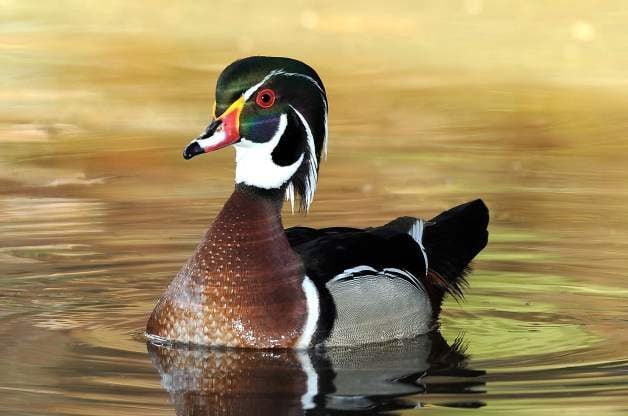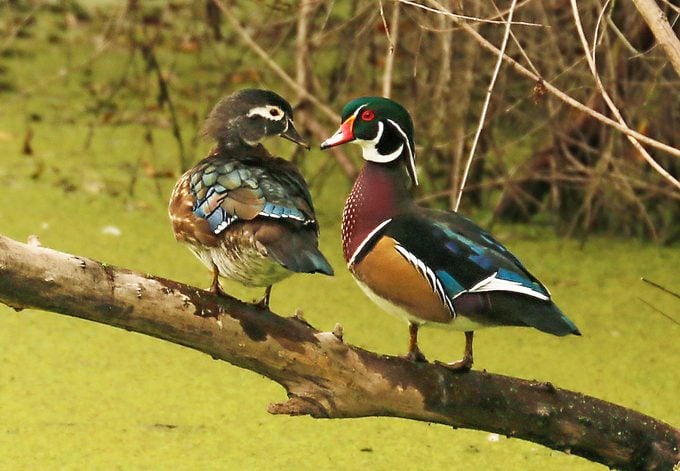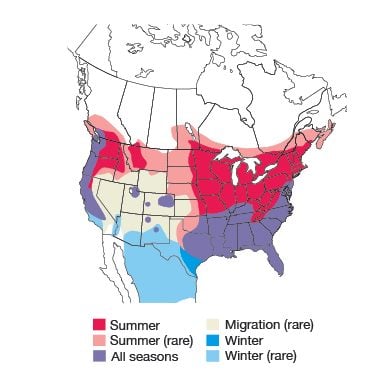How to Identify a Wood Duck
Updated: Dec. 17, 2021
If you live near water, put up a nest box and you may attract a wood duck to your yard. Learn about wood duck nests and hear their song.
Our editors and experts handpick every product we feature. We may earn a commission from your purchases.
Wood Duck Information

Scientific Name: Aix sponsa.
Family: Duck.
Length: 18 inches.
Wingspan: 29 inches.
Distinctive Markings: Male has an iridescent “slicked-back” crest, red eyes, a bill striped with yellow, red, white and black, a bright-white “bridle” and boldly colored feathers on its body and wings. Female is an overall gray with some blue and purple wing markings, a white eye ring, brown eyes and a duller bill.
Check out 20 types of ducks to look for in spring.

Nest and Eggs
Selects a natural cavity or a nest box, sometimes up to a mile away from water. If you live near water, put up a nest box and you may attract wood ducks to your yard. Make sure it has a 4×3-inch elliptical entrance and is 10 to 30 feet above the ground or 5 to 6 feet above water. Female lays 10 to 12 dull-white eggs.
Check out 9 proven tips to attract nesting birds.
What Do Wood Ducks Eat?
Diet: Aquatic plants, acorns, beechnuts, grapes and berries. In backyards, they may eat cracked corn.
Bird Song
Listen to the wood duck’s song. Their voice is thin, squeaky whistles. Male uses a drawn-out “jeweeep” call, while females utter a loud “hoo-eek.”
Bird songs provided by the Cornell Lab of Ornithology.
Range Map and Habitat
Wood ducks prefer wooded areas near lakes, ponds and streams. They will nest in parks or wooded backyards near water.

Range maps provided by Kaufman Field Guides, the official field guide of Birds & Blooms.




















